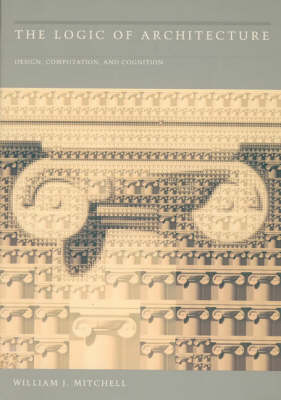The MIT Press
7 total works
The Logic of Architecture is the first comprehensive, systematic, and modern treatment of the logical foundations of design thinking. It provides a detailed discussion of languages of architectural form, their specification by means of formal grammars, their interpretation, and their role in structuring design thinking. Supplemented by more than 200 original illustrations, The Logic of Architecture reexamines central issues of design theory in the light of recent advances in artificial intelligence, cognitive science, and the theory of computation. The richness of this approach permits sympathetic and constructive analysis of positions developed by a wide range of theorists and philosophers from Socrates to the present. Mitchell first considers how buildings may be described in words and shows how such descriptions may be formalized by the notation of first order predicate calculus. This leads to the idea of a critical language for speaking about the qualities of buildings. Turning to the question of representation by drawings and scale models, Mitchell then develops the notion of design worlds that provide graphic tokens which can be manipulated according to certain grammatical rules. In particular, he shows how domains of graphic compositions possible in a design world may be specified by formal shape grammars. Design worlds and critical languages are connected by showing how such languages may be interpreted in design worlds. Design processes are then viewed as computations in a design world with the objective of satisfying predicates of form and function stated in a critical language.
The story of the decade long, billion-dollar building boom at MIT and how it produced major works of architecture by Charles Correa, Frank Gehry, Steven Holl, Fumihiko Maki, and Kevin Roche.
In the 1990s, MIT began a billion-dollar building program that transformed its outdated, run-down campus into an architectural showplace. Funded by the high-tech boom of the 1990s and and driven by a pent-up demand for new space, MIT's ambitious rebuilding produced five major works of architecture: Kevin Roche's Zesiger Sports and Fitness Center, Steven Holl's Simmons Hall, Frank Gehry's Stata Center, Charles Correa's Brain and Cognitive Science Complex, and Fumihiko Maki's still-unrealized project for the Media Laboratory. In Imagining MIT, William Mitchell (who served as architectural adviser to MIT president Charles Vest) offers a critical, behind-the-scenes view of MIT's new buildings and the complex processes that produced them. The story is not simply one of commissions, projects, CAD, and hardhats; it is about all the forces that come into play-including money, politics, institutional dynamics, and ideology-when a major university campus is imagined, designed, and built. Lavishly illustrated with architectural photographs, drawings, plans, and models, with color images throughout, Imagining MIT shows both the opportunities and the obstacles facing architectural production and city building at the dawn of a new millennium.
Mitchell challenges and subverts the standard form of architectural narrative-the mythic tale of heroic designers and enlightened patrons who overcome adversity to realize their visions. Instead, he offers a Rashomon-like construction of multiple voices and viewpoints. He sets the scene by recounting the history of MIT campus architecture, from its early synthesis of classicism and pragmatism to the daring mid-twentieth-century modernism of Alvar Aalto and Eero Saarinen. The descriptions and illustrations of the new projects show not only the evolution of each building, but the relationship of the techniques of architectural representation-themselves evolving, from sketching and modeling to three-dimensional computer modeling and rendering-to the conception and development of architectural ideas.
The fundamental reinvention of the automobile won't be easy, but it is an urgent necessity -- to make urban mobility more convenient and sustainable, to make cities more livable, and to help bring the automobile industry out of crisis.



